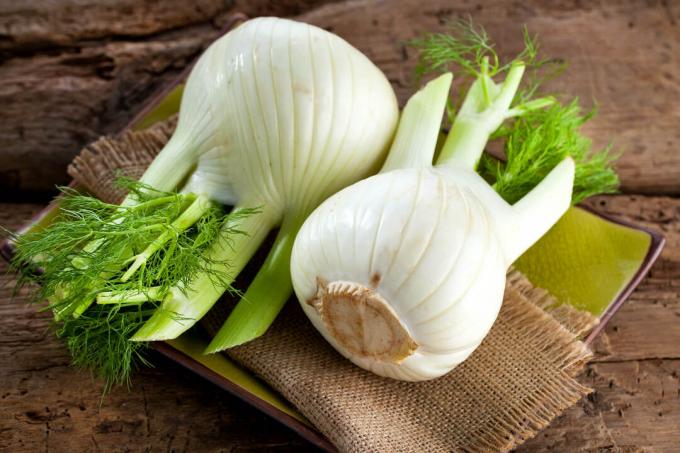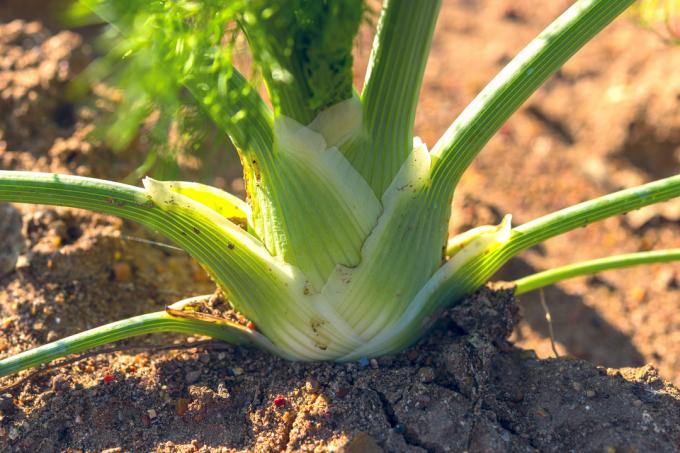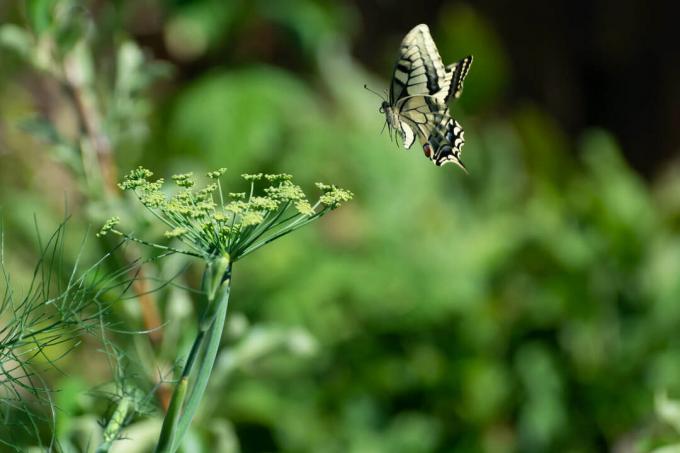Fennel comes from the Mediterranean region and can be cultivated as a vegetable and aromatic plant. You can find out everything about the origin, properties and care of fennel from us.

Fennel (Foeniculum vulgare) has been used as a medicinal plant for thousands of years. We present the diverse, Mediterranean vegetable and spice plant in a profile and give tips on caring for fennel as well as on wintering and propagation.
contents
- Fennel: characteristics and origin
- Care of fennel: watering, fertilizing and Co.
- Is fennel hardy?
- Multiplication
Fennel: characteristics and origin
Fennel has been a traditional herb and medicinal plant in the Mediterranean for centuries. It came to our latitudes through the Romans, but in the beginning it was only sometimes used as a medicinal herb and spice. The exact origin of the fennel is still not fully understood. However, it is reasonable to assume that it is native to the Mediterranean and Western Asia. It is known from tradition that the ancient Greeks used fennel as a spice and, above all, as a medicinal herb. The aromatic fennel, which is also known as Köppernickel, Femis or sliced vegetables, was named medicinal plant of the year in 2009. Fennel belongs to the umbelliferae family (Apiaceae) and is closely related to
anise (Pimpinella anisum), Caraway seed (Carum carvi) and dill (Anethum graveolens) related.
Fennel generally grows as a biennial to perennial shrub with strongly branched stems to a stature height of 120 - 200 cm. Vegetable fennel remains 50 - 100 cm small in the first year, as it does not bloom until the second year, and instead forms scale-like and thickened stem shafts. The fennel root is coarse and extends very deep into the ground in good locations. The leaves of the fennel are three to four times pinnate and green to blue-green in color and are harvested as fennel green and dried. The branched stems of the fennel herb are framed by a fleshy leaf sheath. The flowering time lies between July and September, when the plant produces numerous, inconspicuously yellow-flowered double umbels. Fennel flowers are preferred by Hoverflies (Syrphidae) and bees as they provide plenty of nectar in summer. The initially blue-green seeds that emerge after pollination are elongated, round and clearly grooved. They ripen late in the year between September and November, turning brownish and finally falling off.
Is fennel a vegetable? There are three varieties of fennel, which are used differently: The wild fennel (Foeniculum vulgare var. vulgar), the sweet or Spiced fennel (Foeniculum vulgare var. dulce) and the bulbous or vegetable fennel grown from the spiced fennel (Foeniculum vulgare var. azoricum). Through the return to old varieties, but also through modern breeding, the variety is on Fennel varieties today bigger than ever.

Care of fennel: watering, fertilizing and Co.
Fennel is an easy-care vegetable that requires little attention apart from watering in summer. After this Planting fennel only a few measures need to be taken before harvest. Weeds should be removed from the young plants regularly to keep competition for water and nutrients to a minimum. A mulch layer made from plant materials such as lawn clippings prevents weeds from growing and also reduces evaporation. However, since the breakdown of the organic matter binds nitrogen in the soil, compensatory fertilization may be necessary. Fennel is a middle eater, but needs higher amounts of potassium. A mainly organic slow release fertilizer like ours with a high concentration of potassium Plantura organic tomato fertilizer is ideal for fertilizing fennel. The animal-free granular fertilizer is used when planting preferred young plants or at the beginning of the Tuber formation from directly sown plants around the fennel and superficially incorporated. The nutrients it contains are slowly and gently released for the plant and the environment over the course of the weeks.
The only relevant pest on fennel is the swallowtail caterpillar (Papilio machaon), one of the largest native butterfly species. The damage caused by eating is limited and later rewarded with the pretty, creamy yellow and blue colored butterflies in the garden.

Is fennel hardy?
As an adult plant, tuber fennel is not hardy, whereas the young plants can withstand short-term freezing temperatures down to -4 ° C. Since the vegetable fennel is only cultivated as an annual for its delicate tuber, it is usually not overwintered. The fennel plants only have to be overwintered to obtain seeds. The hardy fennel are the wild fennel and the spiced fennel, which can easily withstand temperatures below - 20 ° C in our latitudes.
Multiplication
Fennel is propagated from its seeds. In order to obtain fennel seeds yourself, you must first consider whether it is spiced fennel or bulbous fennel. The latter usually only blooms in the second year and must therefore be overwintered frost-free in order to obtain seeds. To do this, select 10 - 15 healthy, beautiful fennel bulbs for propagation, and cut the leaves about 20 cm back, pots the fennel plants and puts them in a cold house or in the Winter garden. The humidity should not become too high and watering must also be done very sparingly so that the tubers are not attacked by fungal diseases. In the next spring, the plants are wintered out after the last frost. They then quickly flower and the fennel seeds ripen reliably by autumn. Spiced fennel, on the other hand, already forms numerous inflorescences and seeds in the first year after sowing. In the second year the harvest is usually much larger. Seed heads that turn brown should be cut off quickly and left to dry out, because ripe fennel seeds tend to fall off. The seeds of the fennel can germinate for about one to two years.

tip: Spiced fennel, bulbous fennel and wild fennel are closely related, so they can interbreed with each other. Home-grown fennel seeds tend to flower directly instead of one large tuber. In order to propagate pure fennel, it is therefore important not to do it with two varieties at the same time in the same garden.
Fennel can be used in many different dishes and enriches the kitchen with its aromatic, healthy sprouts. We give tips Harvest, storage and use of fennel.
